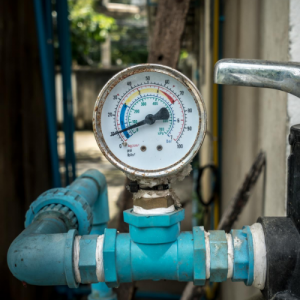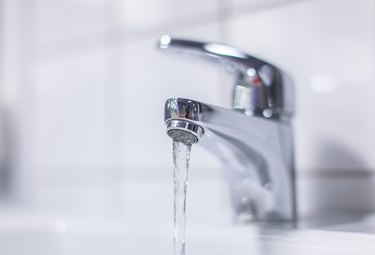An Ultimate Advice to Addressing Low Water Pressure in Your Home
An Ultimate Advice to Addressing Low Water Pressure in Your Home
Blog Article
What are your thoughts and feelings about 4 Ways to Troubleshoot Low Water Pressure?

Low water pressure in your home can be an aggravating trouble, influencing everything from bathing to washing dishes. If you're experiencing weak water flow, there are several possible reasons and services to discover. In this guide, we'll review common reasons for low tide stress and useful steps to address the problem properly.
Introduction to Low Water Pressure
Low water stress takes place when the flow of water from your faucets, showers, and various other fixtures is weak than typical. This can make day-to-day tasks much more challenging and less efficient. Recognizing the sources of low tide pressure is essential to finding the appropriate remedy.
Common Reasons For Low Tide Pressure
Pipeline Obstructions
In time, pipelines can end up being obstructed with natural resource, sediment, or particles, restricting the flow of water. This is a typical issue in older homes with galvanized steel pipes.
Corrosion
Rust within pipelines can cause leaks and decreased water stress. Corrosion buildup can restrict water flow, particularly in maturing plumbing systems.
Faulty Pressure Regulators
Pressure regulators are accountable for maintaining constant water pressure in your home. If they malfunction, it can result in low tide pressure or uneven flow throughout your house.
Metropolitan Supply Of Water Issues
Sometimes, the trouble lies outside your home. Community water supply problems, such as main line leaks or upkeep job, can briefly decrease water pressure in your area.
Just How to Diagnose Low Water Pressure
Inspecting Taps and Components
Begin by checking the water pressure at various faucets and components throughout your home. If the problem is separated to specific areas, it might indicate localized problems.
Examining Pipelines
Evaluate noticeable pipes for indicators of leakages, deterioration, or clogs. Take note of any kind of uncommon sounds, such as banging or rattling pipelines, which might suggest problems within the plumbing system.
Consulting with a Plumber
If you're incapable to pinpoint the root cause of low tide stress, think about employing a professional plumber to carry out a detailed assessment. They can identify underlying issues and suggest ideal options.
DIY Solutions to Repair Low Tide Stress
Cleaning Aerators and Showerheads
Natural resources can collect in aerators and showerheads, decreasing water flow. Remove and clean these components routinely to enhance water pressure.
Flushing Water Heater
Sediment buildup in the hot water heater can limit circulation and decrease effectiveness. Purging the storage tank periodically aids get rid of sediment and maintain optimal efficiency.
Inspecting Pressure Regulator
Make certain that the pressure regulator is working properly. Changing or changing the regulator can aid restore appropriate water pressure throughout your home.
Clearing Up Clogs in Pipeline
For small blockages, attempt using a plumbing serpent or chemical drainpipe cleaner to clear blockages in pipes. Beware when making use of chemicals and adhere to security standards.
When to Call a Professional Plumber
If DIY efforts stop working to fix the concern or if you think considerable plumbing problems, it's finest to seek aid from an accredited plumber. They have the experience and tools to address complex concerns securely and successfully.
Safety Nets to Preserve Water Stress
Regular Upkeep
Arrange regular upkeep for your plumbing system to prevent issues such as rust, leakages, and clogs. Resolving small problems early can help prevent more substantial repair work later.
Setting Up a Stress Booster
Consider installing a stress booster pump to enhance water stress in locations with constantly low circulation. This can be especially beneficial for multi-story homes or properties with high-demand fixtures.
Surveillance Water Usage
Be mindful of water use behaviors and stay clear of overtaxing the plumbing system. Easy changes, such as shocking showers and laundry loads, can aid maintain sufficient water stress.
Final thought
Handling low water pressure can be irritating, yet determining the underlying reasons and applying suitable options can restore optimum circulation throughout your home. Whether it's cleaning up aerators, inspecting pipelines, or talking to a plumber, taking proactive steps can guarantee a steady supply of water for your everyday needs.
FOUR WAYS TO FIX LOW WATER PRESSURE NOW
Turning on a shower or faucet only to find the water comes out in a sad, slow drizzle is never a good feeling. How exactly are you supposed to wash a pan or take a quick shower when it takes 10 minutes just to rinse off a little soap? The good news is that when your water pressure is bad, there's always a cause: typically one that can be easily fixed. Here are some of the most common causes of low pressure and what you can do to fix the issue:
DEBRIS AND MINERAL DEPOSIT BUILDUPS
If you notice low water pressure from just one or two of the fixtures in your house, the problem likely has to do with debris buildup. Water is full of minerals and other debris, all of which can accumulate in your pipes and on your fixtures. This can cause a blockage that affects how much water flows through. To fix this, try filling a small plastic bag with white vinegar, and use a rubber band to hang it around your showerhead or faucet. Let the head of the fixture soak for a few hours, and the vinegar should loosen the deposits.
WATER LEAKS
Leaks are another common cause of low water pressure. If water is flowing out of your plumbing through a hole or crack before it can reach your fixture, the pressure coming out of the faucet or showerhead will be lower. A plumbing professional is your best bet for finding and repairing a leak in your water supply pipes.
Leaks are another common cause of low water pressure. If water is flowing out of your plumbing through a hole or crack before it can reach your fixture, the pressure coming out of the faucet or showerhead will be lower. A plumbing professional is your best bet for finding and repairing a leak in your water supply pipes.
FOUR WAYS TO FIX LOW WATER PRESSURE NOW
Turning on a shower or faucet only to find the water comes out in a sad, slow drizzle is never a good feeling. How exactly are you supposed to wash a pan or take a quick shower when it takes 10 minutes just to rinse off a little soap? The good news is that when your water pressure is bad, there's always a cause: typically one that can be easily fixed. Here are some of the most common causes of low pressure and what you can do to fix the issue:
DEBRIS AND MINERAL DEPOSIT BUILDUPS
If you notice low water pressure from just one or two of the fixtures in your house, the problem likely has to do with debris buildup. Water is full of minerals and other debris, all of which can accumulate in your pipes and on your fixtures. This can cause a blockage that affects how much water flows through. To fix this, try filling a small plastic bag with white vinegar, and use a rubber band to hang it around your showerhead or faucet. Let the head of the fixture soak for a few hours, and the vinegar should loosen the deposits.
WATER LEAKS
Leaks are another common cause of low water pressure. If water is flowing out of your plumbing through a hole or crack before it can reach your fixture, the pressure coming out of the faucet or showerhead will be lower. A plumbing professional is your best bet for finding and repairing a leak in your water supply pipes.
Leaks are another common cause of low water pressure. If water is flowing out of your plumbing through a hole or crack before it can reach your fixture, the pressure coming out of the faucet or showerhead will be lower. A plumbing professional is your best bet for finding and repairing a leak in your water supply pipes.
A VALVE ISSUE
If you have low water pressure throughout your home, check your main shut-off valve to make sure it's completely open. You may also want to see if there's a pressure-reducing valve installed. If there is, have a plumber help you adjust the settings to get the pressure you're looking for.
OTHERS USING WATER
Believe it or not, your low water pressure could be caused by your neighbors. If you notice low pressure at certain times of day, it may be because you and the people living next to you have similar schedules - when everyone is showering at the same time, the pressure will be lower in every home. Low pressure throughout the neighborhood may also be caused by an issue with your municipal water supply. If that's the case, call the supplier to see if they're working on the issue.
https://www.rotorooter.com/blog/water-leaking/low-water-pressure-fixes/

Hopefully you enjoyed our section about 9 Reasons for Low Water Pressure in Your House. Thank you so much for finding the time to read through our post. Do you know about somebody who is fascinated with 9 Reasons for Low Water Pressure in Your House? Feel free to share it. Thank you so much for going through it.
Rates Report this page